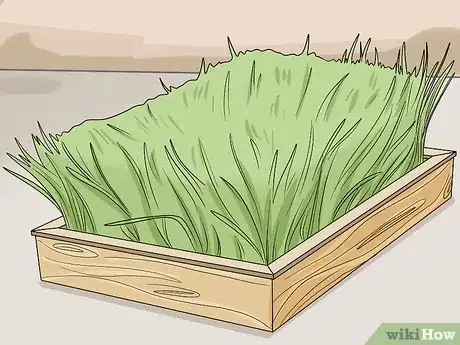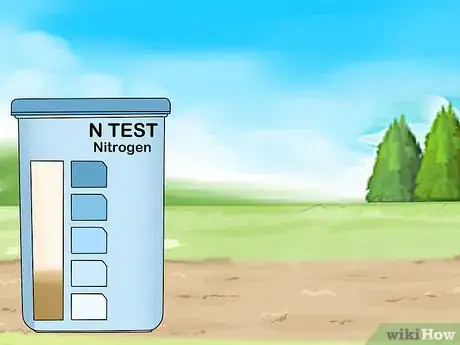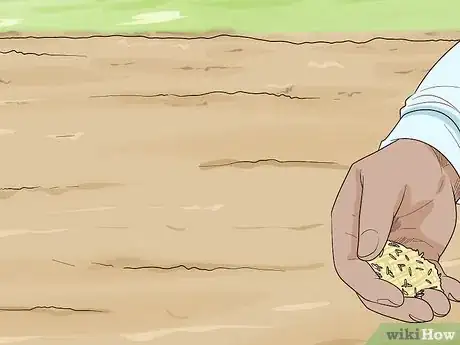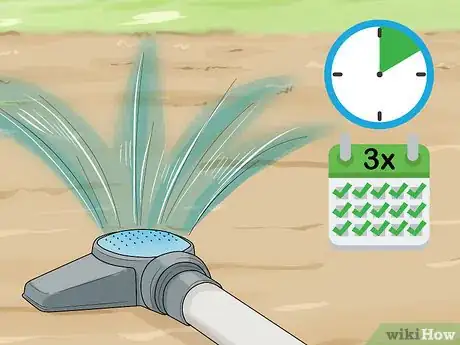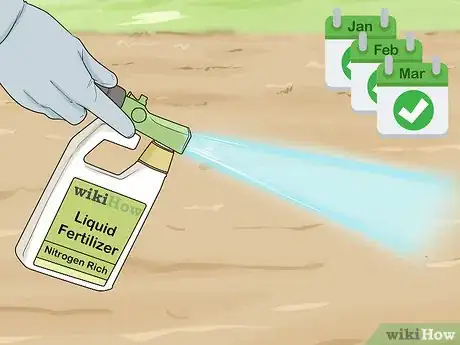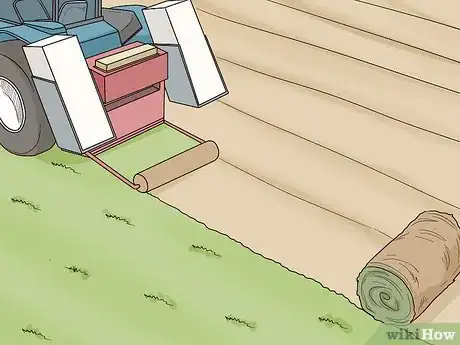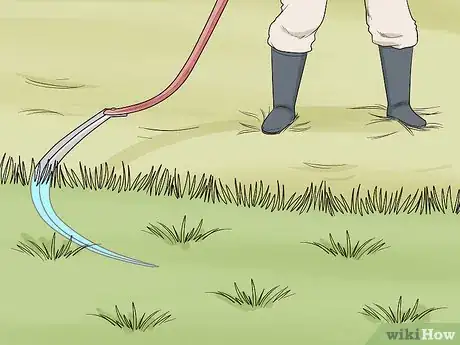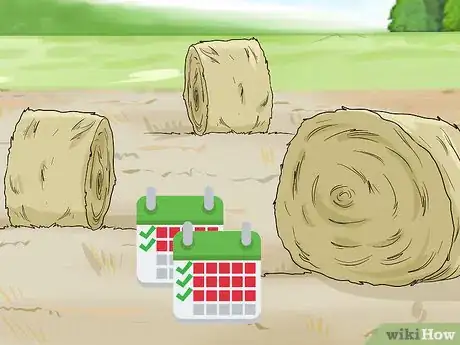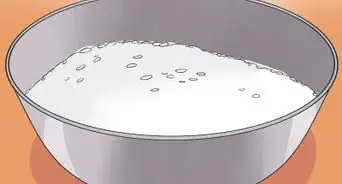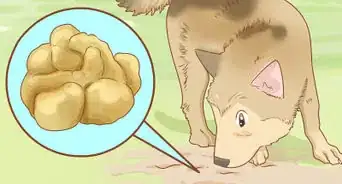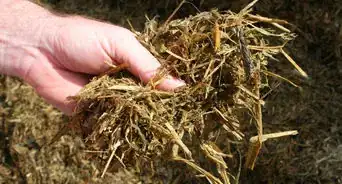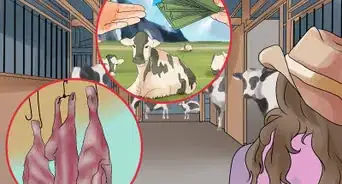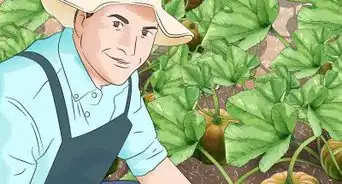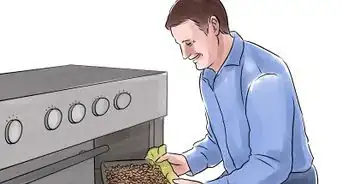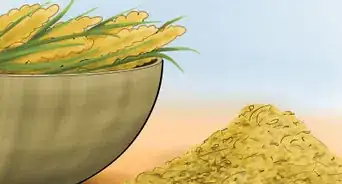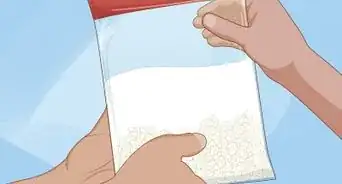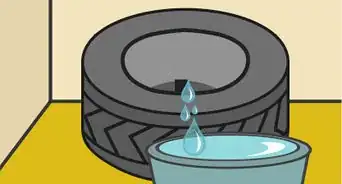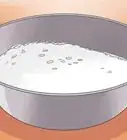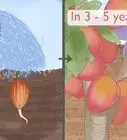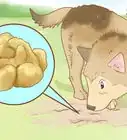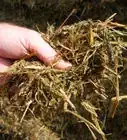This article was co-authored by wikiHow Staff. Our trained team of editors and researchers validate articles for accuracy and comprehensiveness. wikiHow's Content Management Team carefully monitors the work from our editorial staff to ensure that each article is backed by trusted research and meets our high quality standards.
This article has been viewed 87,707 times.
Learn more...
Whether you need it for livestock or other uses, growing hay at home is a cheap and easy alternative to purchasing it in bulk. Depending on your preferences, you can use grass, alfalfa, or a mixture of both to make hay. Once you've grown your crop, all you have to do is cut, dry, and store your hay for use as needed. Given seven months and plenty of care, you're sure to have plenty of homegrown hay for your needs!
Steps
Planting
-
1
-
2Plant your grass or alfalfa in a nitrogen-rich soil. Hay grows best in soil with plenty of organic matter. Test the soil's nitrogen content with a home soil test kit and, if low, mix it with a nitrogen-rich compost.[4]
- You can buy home soil test kits from some plant nurseries or agricultural supply stores.
- To make your compost nitrogen-rich, add coffee grounds, plant clippings, chicken droppings or aged manure, or bone meal.
Advertisement -
3Till the ground with a rotary tiller. Turn on the tiller and push it through the dirt in a straight row. Work your way through the dirt in straight lines until you till the entire area.[5]
- If you don't have a rotary tiller or are tilling a small area, you can loosen the dirt and smooth out any clumps with a shovel.
-
4Spread grass or alfalfa around the tilled dirt. Grab a handful of grass, alfalfa, or mixture seeds and spread them evenly along the tilled dirt. Rake the entire tilled area to work the seeds into the soil using light strokes.[6]
- If you're growing grass, you can also plant grass plugs or [[lay sod instead.
- Water the seeds immediately after planting to help them adjust to their new environment.
Caring
-
1Water the grass or alfalfa daily. For the first 10 days after planting, water the grass or alfalfa 3 times a day for 10 minutes each time. After 10 days, you can decrease this number to just once a day for 20 minutes.[7]
- After watering the grass or alfalfa, the soil should be moist but not waterlogged.
-
2Fertilize the grass or alfalfa once a month. Hay grows best if it has plenty of nitrogen and organic matter. Purchase a nitrogen-rich liquid fertilizer and spray the plant and the soil, reapplying the fertilizer monthly to encourage growth.
-
3Spray the grass or alfalfa with a non-toxic pest repellent. Hay crops are prone to weevil, blister beetle, and other insect infestations. To keep insects from damaging your crop, spray your crop with a non-toxic insect repellent once a month or as you notice infestations.[8]
- You can buy non-toxic pest repellents online or from some plant nurseries.
- Do not spray toxic repellents on the hay. Non-toxic is important, particularly if you plan to use the hay for livestock feed.
-
4
Harvesting
-
1Harvest the grass or alfalfa before it flowers. The best time to harvest grass or alfalfa for hay is while it's green but not yet flowering. If you notice your crop beginning to flower, harvest the crop within several days if possible.
- Alfalfa usually flowers 7-8 months after planting. Plan on harvesting your hay within this time frame.
-
2Cut the grass or alfalfa using a scythe or shears. Depending on the size of your harvest, chop the grass or alfalfa about 1–2 inches (2.5–5.1 cm) from the roots. After cutting the hay, gather it in a container for curing later on.[10]
- For larger crops, you can use a rotary disk or sickle mower instead.[11]
-
3Dry the grass or alfalfa for 2-3 weeks. Lay the grass or alfalfa out on a dry, warm spot with plenty of sunlight. Leave the harvest to dry for at least 2 weeks or until it is completely dry to the touch.
- If you live in a windy location, dry your crops in a greenhouse or a shed with windows.
-
4Store your hay in a dry location. Hay is especially prone to mold or mildewing. To prevent this, choose a place with low humidity to store your hay (like a shed or garage).
- If you have to store your hay outside, you can cover it with a tarp to protect it from moisture.
- As long as your hay is stored away from moisture, it should last indefinitely.
Things You'll Need
- Grass or alfalfa seeds
- Nitrogen-rich soil
- Rotary tiller
- Water
- Nitrogen-rich liquid fertilizer
- Non-toxic pest repellent
- Scythe or shears
References
- ↑ https://www.hobbyfarms.com/how-to-grow-hay/
- ↑ https://www.hobbyfarms.com/all-hay-is-not-equal-choose-your-livestocks-carefully/
- ↑ https://www.hobbyfarms.com/all-hay-is-not-equal-choose-your-livestocks-carefully/
- ↑ https://www.hobbyfarms.com/how-to-grow-hay/
- ↑ https://www.popularmechanics.com/home/lawn-garden/how-to/a9557/7-steps-to-seeding-a-new-lawn/
- ↑ https://www.popularmechanics.com/home/lawn-garden/how-to/a9557/7-steps-to-seeding-a-new-lawn/
- ↑ https://www.popularmechanics.com/home/lawn-garden/how-to/a9557/7-steps-to-seeding-a-new-lawn/
- ↑ https://www.hobbyfarms.com/how-to-grow-hay/
- ↑ https://www.noble.org/news/publications/ag-news-and-views/2009/september/common-mistakes-in-growing-alfalfa/
About This Article
If you want to grow hay, you’ll need to till the area you plan to use into straight lines, which helps the seed grow. When you plant the seeds, rake them into the soil and water them immediately to help them settle in. During the first 10 days, water the grass daily to encourage growth. You should also add a nitrogen-rich fertilizer once a month, since hay grows best in soil high in nitrogen. Hay can be prone to attracting insects and other pests, so it’s a good idea to spray it monthly with a non-toxic insect repellant to keep them away. For tips on how to harvest your hay, keep reading!
